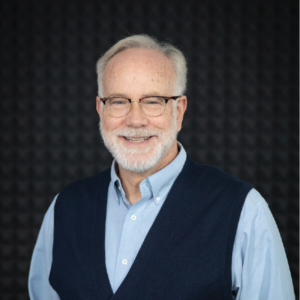Expanding Our Intergenerational Horizons
 Recently, the De Pree Center hosted a fascinating webinar with three experts in intergenerational collaboration. I greatly enjoyed interviewing Eunice Lin Nichols, Raymond Jetson, and Sheretta Harrison, who instructed and inspired me. (If you missed this webinar, you can watch it on YouTube.) As they shared the work they’re doing, I found my intergenerational horizons expanding.
Recently, the De Pree Center hosted a fascinating webinar with three experts in intergenerational collaboration. I greatly enjoyed interviewing Eunice Lin Nichols, Raymond Jetson, and Sheretta Harrison, who instructed and inspired me. (If you missed this webinar, you can watch it on YouTube.) As they shared the work they’re doing, I found my intergenerational horizons expanding.
I do not need to be persuaded about the value of intergenerational relationships. I grew up several houses away from one set of my grandparents, with whom I gladly spent thousands of hours during my childhood, teenage years, and young adulthood. My grandmother was a leadership role model for me. My grandfather taught me about tools and construction. He was also my best friend.
My intuitive love of intergenerational engagement now flows both ways, so to speak. I enjoy hanging out with younger folk, whose energy and imagination motivate me, and with older adults, whose wisdom and vision inspire me. So I don’t need to be argued into the need for generations to mix it up. I’m already “all in,” as people half my age tend to say.
But I do need to have my intergenerational horizons expanded. I need to envision possibilities that I’ve never considered before. I need to picture ways of collaboration that are new to me. I need to be stretched to think and act in new ways, both in my personal life and in my third third work at the De Pree Center.
I’m not alone here in my need for expanded horizons. Take churches, for example. Yes, some offer mainly age-segregated programs. Even “intergenerational worship” is rarely very intergenerational once you get beyond the age range of people sitting in the pews. But, as I speak with pastors and other church leaders, increasingly I hear a desire for genuinely multigenerational community life. They can sense the need and the potential benefit of older folk and younger folk mixing it up. But, like me, these church leaders who yearn for such mixing tend to have limited imagination about what this might look like.
For those of us who need our horizons expanded, help is on the way. It comes in the form of a series of articles in the Stanford Social Innovation Review. These articles are not filled with simple, practical advice for people who want to make their lives more multigenerational. Nor are they focused on what churches are doing or can do. Rather, the SSIR articles examine broader social trends and specific social innovation solutions. They don’t supply lots of short-term to dos, but they will expand your horizons about what is possible when it comes to intergenerational relationships. The content of these articles will both instruct and inspire you. They will help you see in new ways and, I hope, dream in new ways.
Here’s how the SSIR series is set up on their website:
The United States began the 20th century as one of the most age-integrated societies in the world and ended it as one of the most age-segregated. This restructuring has left the country ill-prepared for a world with more Americans living longer lives and more generations living at the same time. It has also yielded a range of social problems, including wasted human resources, rampant ageism, and an epidemic of loneliness. Younger and older people are the most isolated groups in society—a reality made all the more evident by the COVID-19 pandemic.
As the United States crosses a demographic Rubicon—with more individuals over 60 than under 18 for the first time in history—it’s time to turn the situation around in ways that both alleviate the problems created by age segregation, and help realize the benefits of greater cross-generational engagement and interdependence. The social sector must be as creative about bringing people of different ages together as previous innovators were about splitting them apart.
Fortunately, a vibrant, if fledgling, movement to bridge generational divides is already underway. This essay series, presented in partnership with Encore.org and The Eisner Foundation, explores some of the most promising innovations, shining a light on the breakthroughs, lessons, and barriers to both success and scale. Written by a mix of social entrepreneurs, academic researchers, and philanthropic leaders, the series aims to demonstrate how fresh thinking and new social arrangements hold the potential to make the most of an increasingly multigenerational society.
So far the series includes the following articles:
- Overcoming Age Segregation / Marc Freedman and Trent Stamp
- Tackling the Housing Crisis and Bridging Generational Divides Through Home-Sharing / Noelle Marcus
- Solving the Loneliness Epidemic, Two Generations at a Time / Madeline Dangerfield-Cha & Joy Zhang
- The Power of Proximity: Co-locating Childcare and Eldercare Programs / Donna Butts and Shannon E. Jarrott
I encourage you to be sure and read “Overcoming Age Segregation,” which tells a fascinating and troubling story, but not without hope.
If you’re a church leader, either a pastor or a congregational leader, I would love to hear from you what stirs in your heart as you read these articles. I wonder if you’ll find them expansive in the way I did . . . and still do.

Mark D. Roberts
Senior Strategist
Dr. Mark D. Roberts is a Senior Strategist for Fuller’s Max De Pree Center for Leadership, where he focuses on the spiritual development and thriving of leaders. He is the principal writer of the daily devotional, Life for Leaders,...


